The tale of Avington Park: ‘I have just bought a house. It doesn’t have five bedrooms, but 50. I think you should probably come home.’
Avington Park, Hampshire — the home of Sarah and Charlie Bullen — is a home with rather astonishing history that’s superbly set in the valley of the River Itchen. John Goodall finds out more; photographs by Will Pryce.


Avington Park in Hampshire has a rare ability to beguile strangers. When the writer William Cobbett passed through in November 11, 1825, for example, he marvelled at the house, trees, birds and wildlife perfectly reflected in the neighbouring lake. It was ‘certainly one of the very prettiest places in the county,’ he thought.
Something of the same reaction characterised another more recent, and more important, chance encounter with the house. In 1953, Audrey Hickson, the wife of Lt-Col John Hickson MC, a serving officer in the Northamptonshire Regiment, laid down a deposit on a cottage just outside Winchester. Riding out from the city one day to show one of her daughters the new prospective family home, she stumbled across Avington — a spreading country house in the valley of the River Itchen — and fell in love with it at first sight.
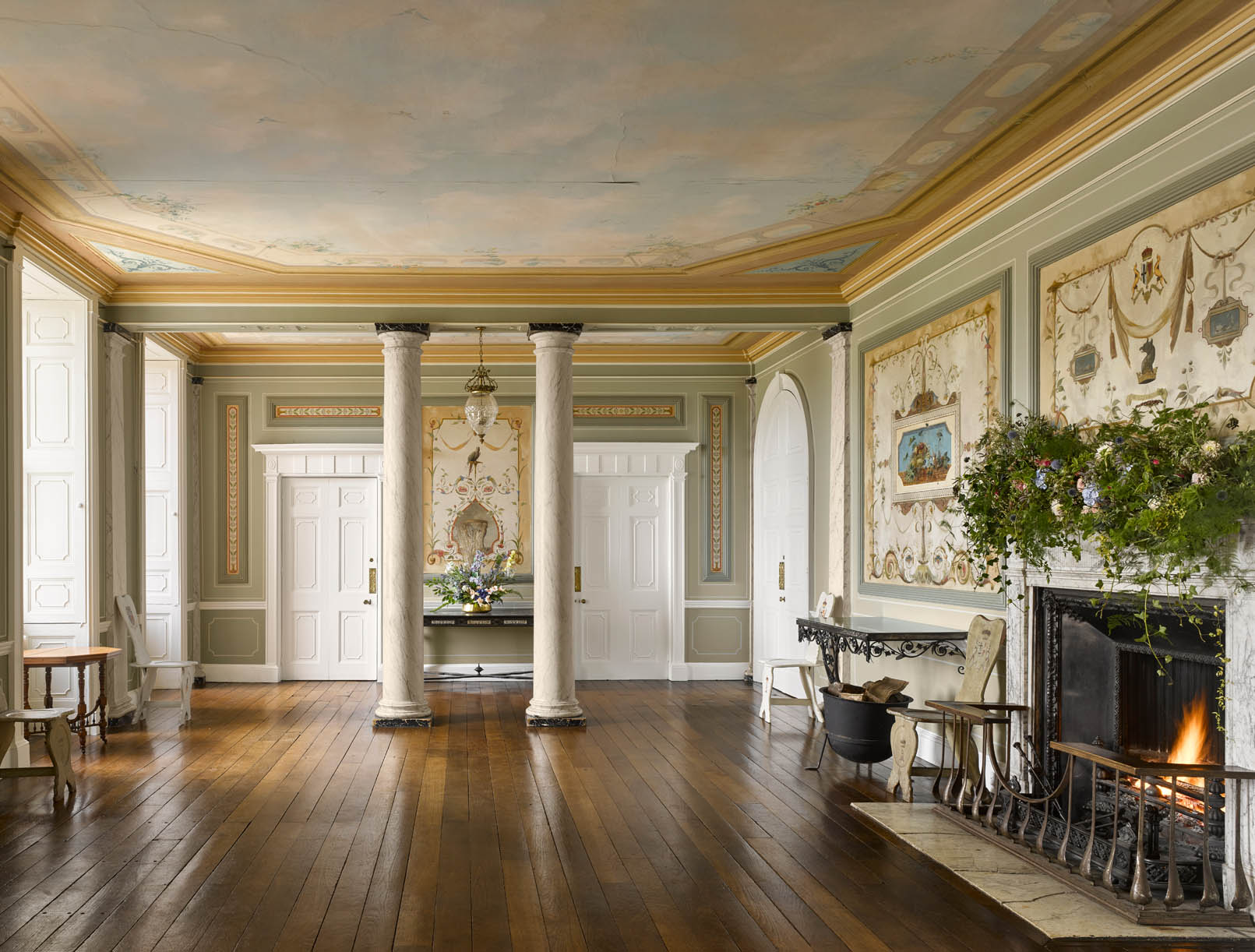
At the time, Avington was passing through a difficult period. The building had been requisitioned by the Pay Corps during the Second World War, which had treated the fabric relatively well and even renewed the roof (although the lead was replaced with copper). In 1951, however, after the death of an owner, the contents of the house had been sold off, the estate broken up and the building itself purchased by a developer, who began to strip the interior of fittings.
Even in this sad state, however, and with the shutters closed up, Mrs Hickson bought the property. The liabilities involved meant it cost even less than the cottage and it came with its drive and lawns.
She then wrote to her husband in Burma. The gist of her letter was simple but direct: ‘I have just bought a house. It doesn’t have five bedrooms, but 50. I think you should probably come home.’
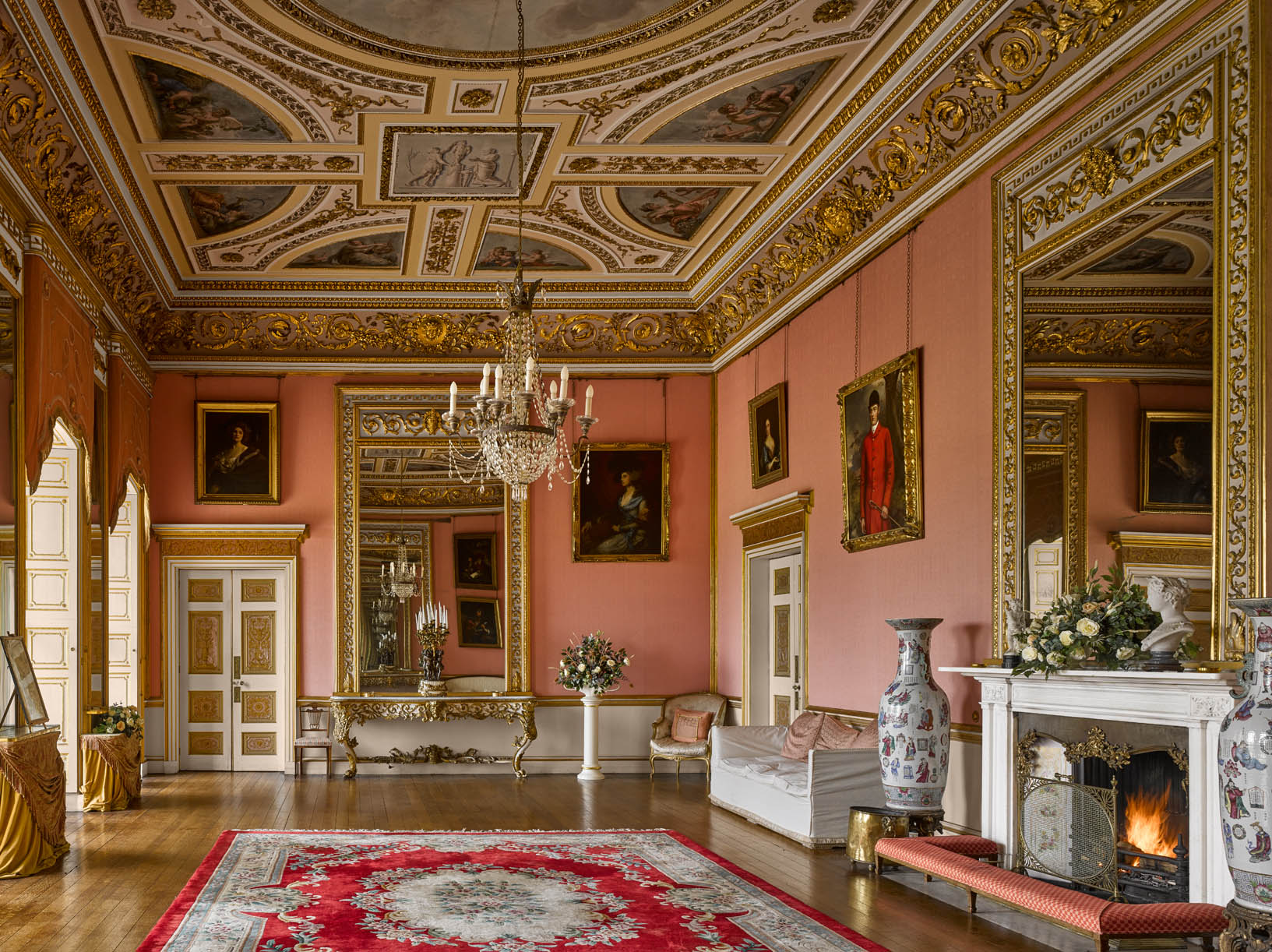
Avington is first documented in 961, when it was given to the monastery of St Peter and Paul at Winchester. It remained an ecclesiastical estate until the Reformation, when it was granted in 1545 to Edmund Clerke of Micheldever, a Clerk of the Privy Seal, and his wife, Margaret, for a substantial payment of £406. The earliest parts of the house are conventionally attributed to Edmund, who died in 1586, but it might equally be of medieval origin. Indeed, nothing is very clear about its architectural development until about 1700 and, even then, it is open to contrary interpretation.
In 1664, the property was purchased by George Rodney Brydges, the son of a noted Somerset Cavalier. George cut a figure in the Restoration Court and, in 1677, married one of its notorious characters, Lady Anna Maria Brudenell. She was famously widowed in 1668, when her lover, the Duke of Buckingham, killed her first husband, the Earl of Shrewsbury, in a duel. It is not clear what brought about her marriage to George, but, afterwards, Lady Anna Maria purchased him a position close to Charles II as a Groom of the Bedchamber for £4,500.
Exquisite houses, the beauty of Nature, and how to get the most from your life, straight to your inbox.
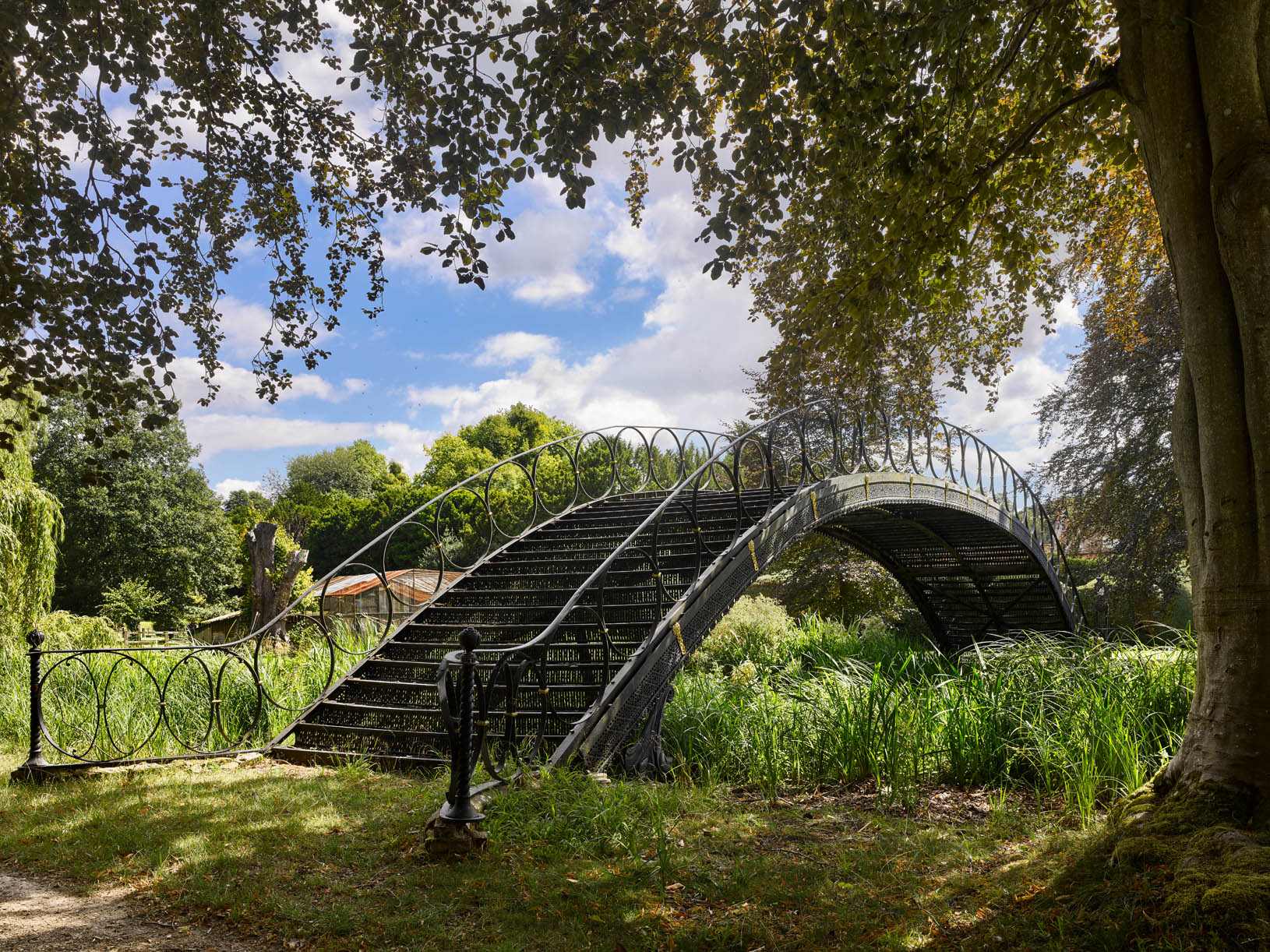
Soon afterwards, in 1682, the King was invited down to Winchester for his favourite pastime of racing. The visit was an enormous success and, possibly inspired by Louis XIV’s example at Versailles, he determined to re-plan the city with a palace on the former site of Winchester castle. Work under the direction of Christopher Wren was pressed forward with remarkable speed, but the King died in 1685, just as the main block was completed. Thereafter, the project languished.
For the two years or so that Winchester anticipated the residence of the Court, property in and around the city was in the highest demand. Moreover, several 19th-century authorities assert that, during the building works, George entertained the King at Avington. If that is true, it is possible that he began work to a new house at this time. Certainly, one element of the building long associated with this putative rebuilding is the splendid entrance portico of the house.
Confusingly, however, the portico is today integral with the early-18th-century fabric (the bowed arches of the windows of the main façade, for example, clearly do not belong to the 1680s), so it must either have been recycled within the present structure or actually be of slightly later date.
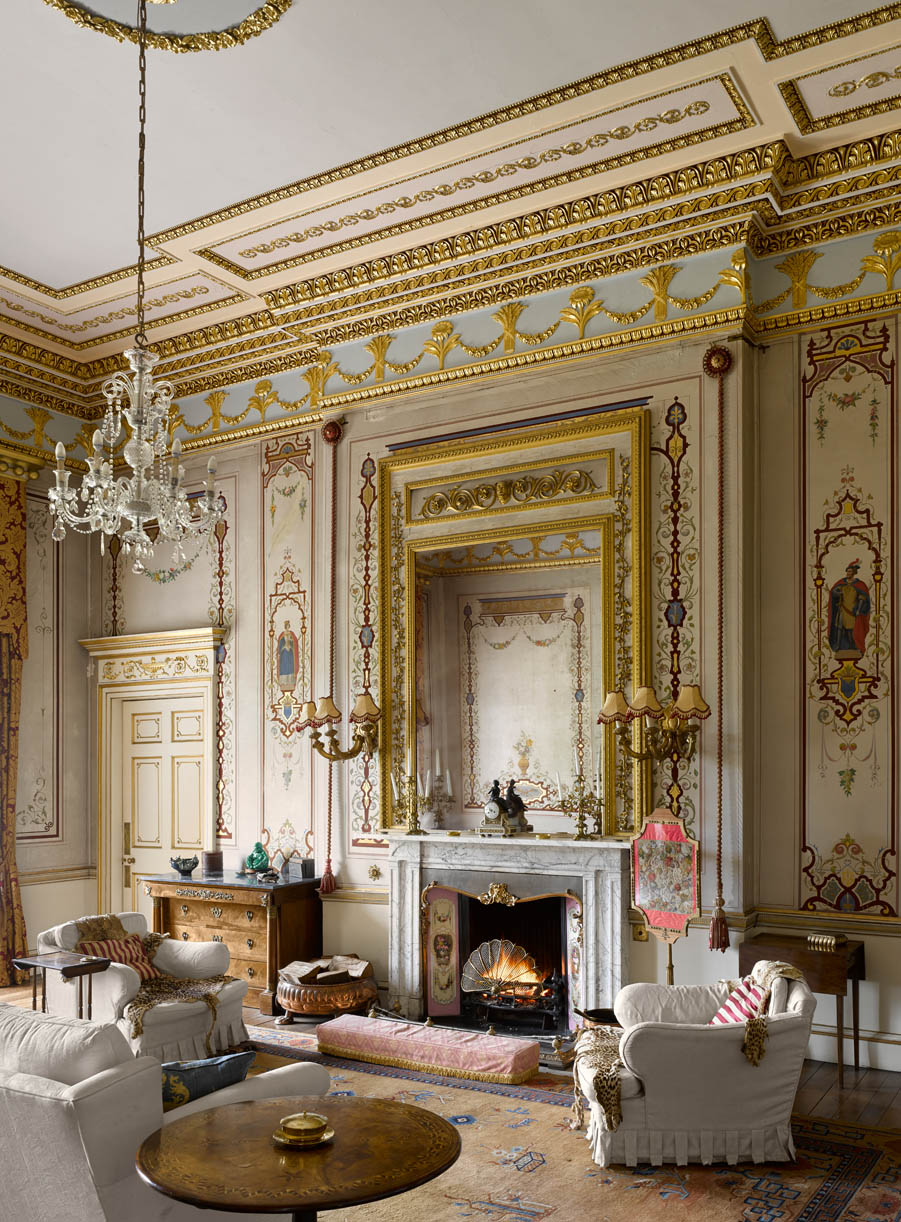
In either case, the most likely patron of the core of the present house was George’s son, yet another George. He succeeded his father — who died of gangrene from an ingrown toenail — in 1714 and served as MP for Winchester for the following 37 years. In that time, he was a dutiful supporter of the administration and had the means and incentive to build. George was also the godfather and guardian of the future Admiral Rodney, who spent some of his childhood here.
Probably soon after 1714, therefore, the heart of the present house came into being: a central portico (recycled or new) creating an imposing entrance to a hall range that was bookended by cross wings. Straggling out to the rear of this compact formal composition were service buildings smartly detailed in brick.
On May 13, 1751, George was ‘found drowned in the canal of his gardens at Avington… supposed by accident, being 72 and paralytic’. Among other bequests, he left £800 towards the St John’s Hospital in Winchester, where his portrait, now in Winchester Guildhall, formerly hung.
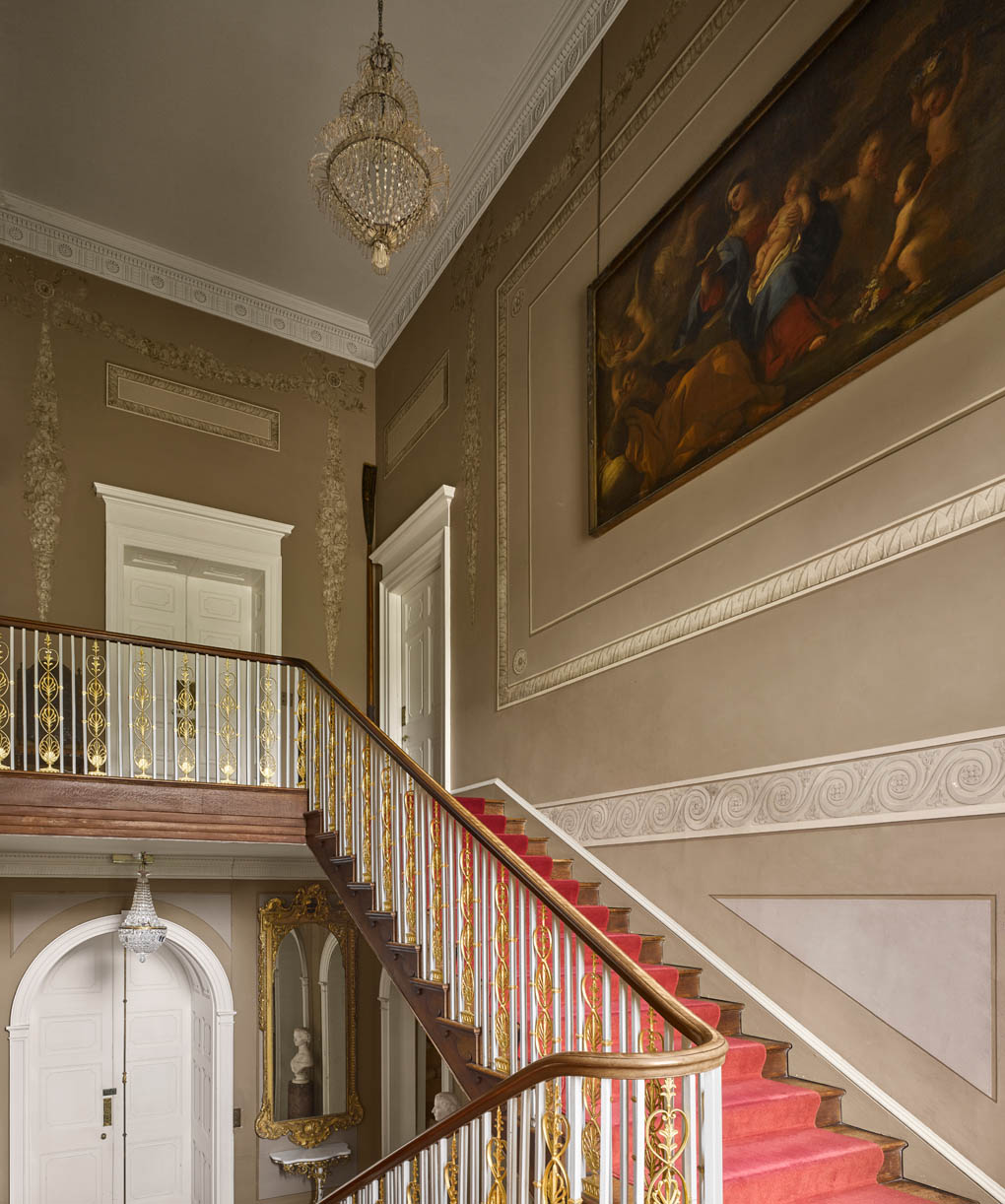
The bulk of his estate passed by entail to a distant cousin, the 2nd Duke of Chandos. George’s wife may, however, have remained in occupation of the house until her death in 1763 and, thereafter, the property seems to have been associated with the Duke’s son, Lord Carnarvon, and his wife, Margaret.
She died in 1768 after planning a new church beside the house. Her monument, which faces that of George Brydges and his wife across the chancel, notes that the church was ‘built from the Ground, by her Order, at her Expense, tho’ it pleased God to remover her to a better World, a few Months before it was begun’.
The widowed 3rd Duke remarried and, in 1771, acceded to his father’s title. According to Sir Egerton Brydges in Topographical Miscellanies (1792), the Duke ‘made Avington his principal seat… continuing through his life to improve the house and particularly the grounds’. The latter work, including the creation of the lake beside the house, was overseen by James Darley and John Cox, for which they received £4,000 in 1787. It is possible that the superb iron bridge close to the house was erected as part of these improvements; if so, it is a remarkably early structure of its kind.
To increase the size of the formal apartments of the house, the Duke doubled the depth of the wings and probably added the sculpture over the portico (reputedly from Canons, the fabled home of the 1st Duke of Chandos, demolished in 1747). According to Brydges, he also extended the house to the rear with a library.
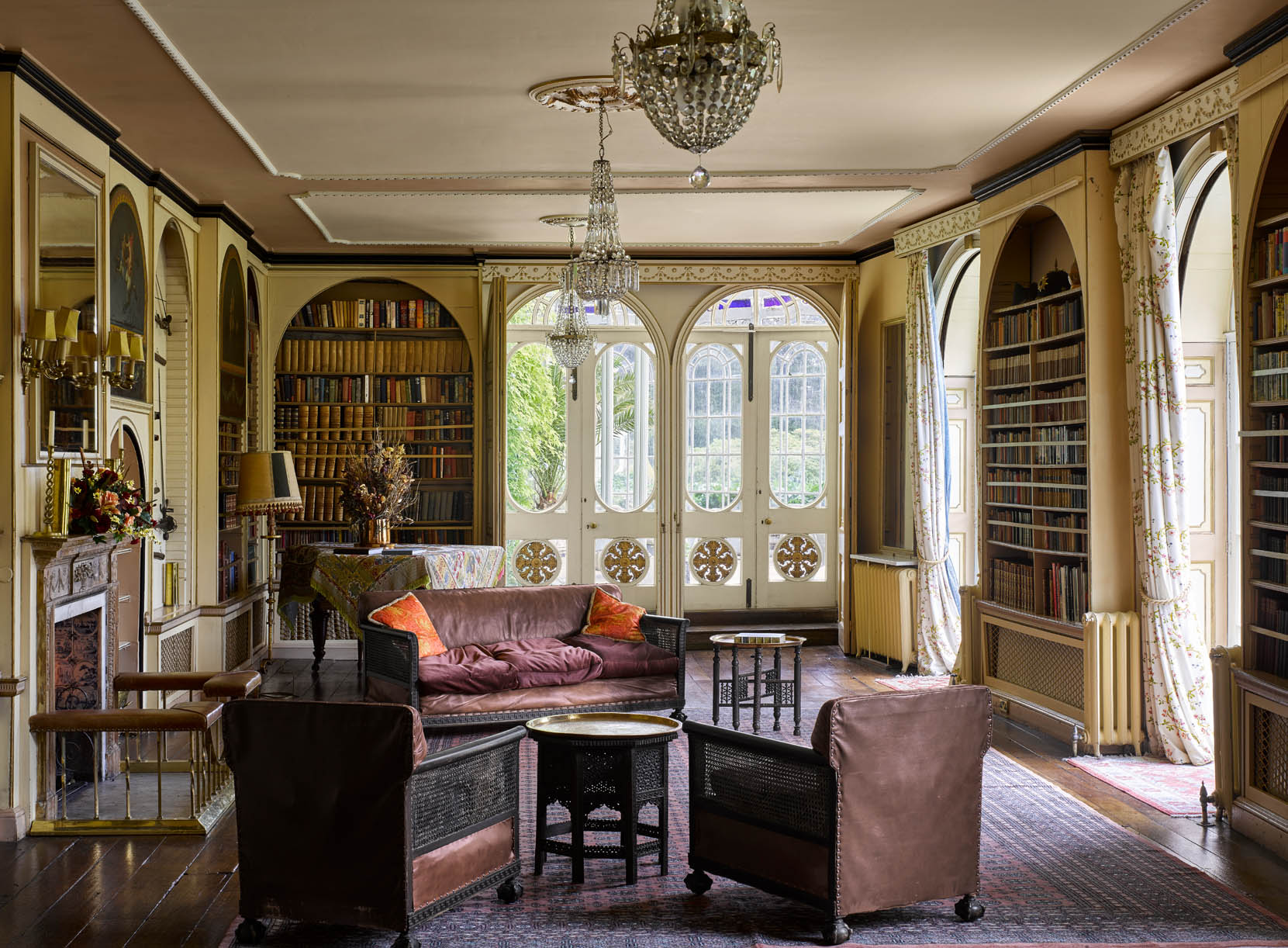
This work was interrupted, however, when he died in 1789. In its unfinished state, Avington then passed through his 16-year-old daughter to Earl Temple, heir of Stowe, by marriage in 1796. This match promised to unite Avington (and the great maternal plantation fortune) with the Stowe inheritance.
The state of Avington is described soon after the match in E. W. Brayley and J. Britton’s The Beauties of England and Wales (1805): ‘The present mansion is mostly of brick; and though not yet completed, has been greatly improved since it came into the possession of Earl Temple; it having been previously dismantled, by the late Duke, for the purpose of adding two wings… Several of the apartments are fitted up with great elegance, and are enriched by a choice collection of paintings, entirely of his Lordship’s forming… [many] from the Orleans and Besborough collections.’
Today, the sophistication of the completed decoration is suggested by two superb interiors: the saloon and the Pompeiian library. Nothing is securely known about who painted these schemes or which Duke commissioned them. The Italianate saloon paintings are on canvas and perhaps by Vincenzo Valdrè.
In 1813, Earl Temple succeeded his father to the Stowe estate and, in 1822, secured the title of Duke of Buckingham and Chandos. He was now well established as an unpopular figure, grossly fat, grasping and self-interested. He was also a spendthrift.
Stowe was shut up in 1827 as an economy and the Duchess moved to Avington, which she loved. The Duke went abroad in a yacht designed on a sufficiently grand scale to accommodate both his physical bulk and his extravagant needs. The intention of these travels was to reduce his expenditure, but he was yet further in debt when he returned in 1830.
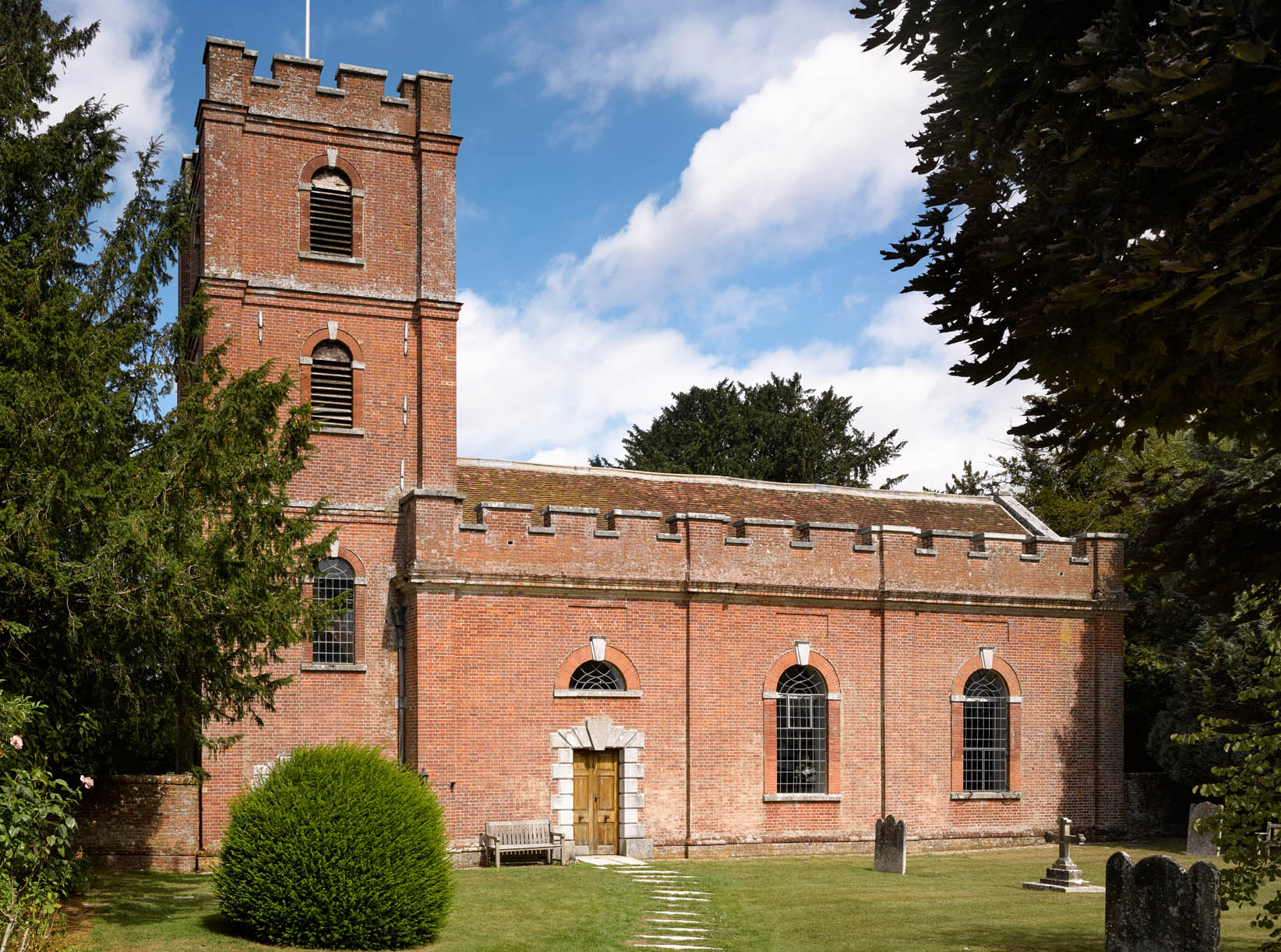
His arrival coincided with the agricultural unrest of the Swing Riots and, according to Lord Ellenborough’s diary, the Duke ‘went down to Avington, sent for his yacht’s guns, six of them, and all his yacht’s men & other sailors; put his house in a state of defence with 40 well-armed people, & got together 150 more — farmers, labourers, gamekeepers, &c. Thinking his house might be injured by a siege he advanced and met the rioters, read the Riot Act & charged at once’. In this distinctly unglorious fight, he seized 31 rioters.
The couple subsequently returned to Stowe, where the Duchess died in 1836 (her body was returned to Avington for burial) and the Duke, by now gout-ridden and virtually immobile, died in 1839. Their son, who inherited his father’s financial irresponsibility, was declared bankrupt in 1847 and Avington was sold with its contents to Sir John Shelley, the brother of the poet.
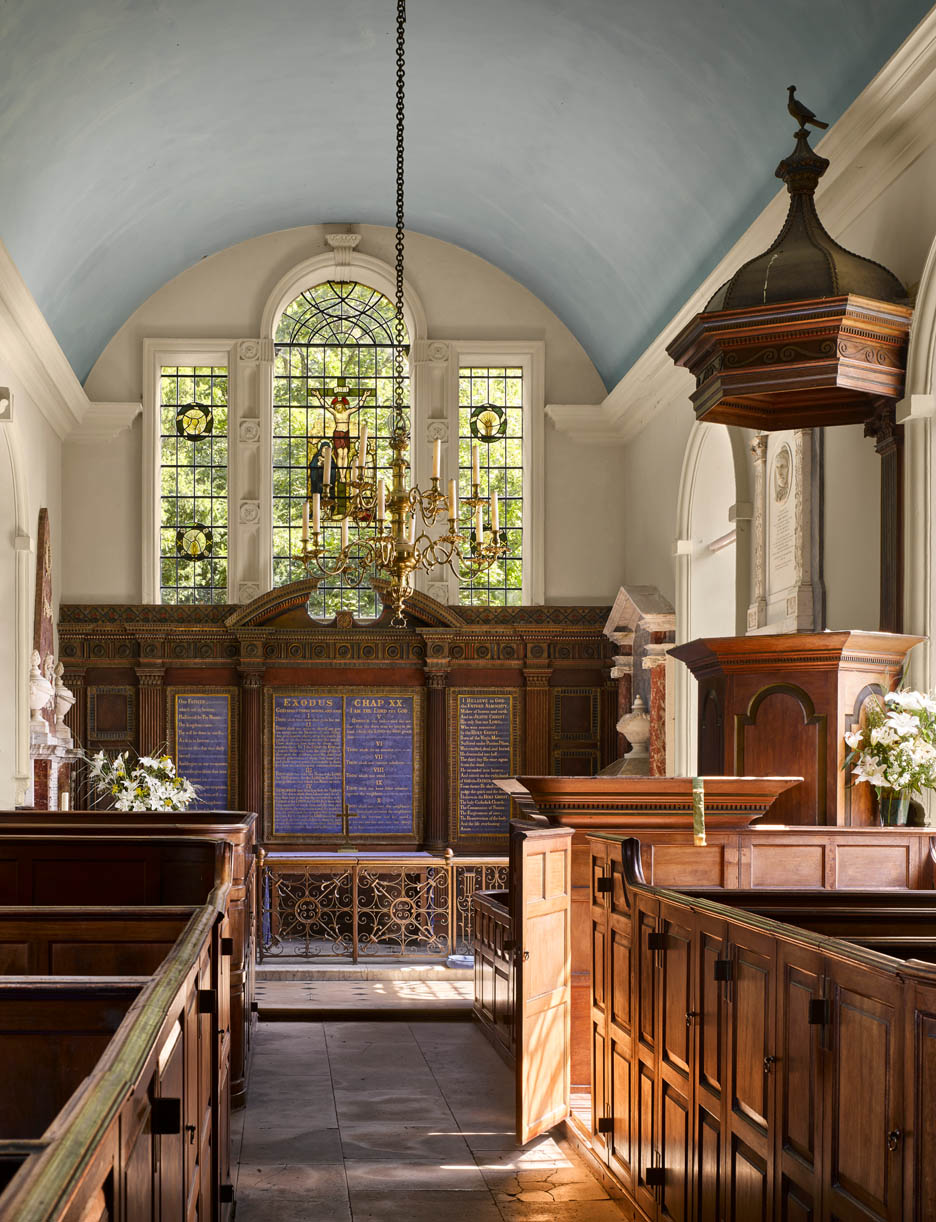
It is likely Sir John added the final touches to the house as it is known today, including the conservatory and the decoration of the Red Drawing Room, with its painted figures of French and English historical figures. He might also have executed the paintings in the entrance hall, a decorative scheme of uncertain date, but certainly augmented in the late 19th century.
The house, which descended in the Shelley family until 1951, was well known for its fine collections and appeared in Country Life in 1922. Four years later, the magazine also illustrated the hydro-electric plant installed at Avington. This state-of-the-art technology provided three villages with light, as well as power for cooking, heating and ice storage in the house itself.
Despite this investment, the estate began to be sold off piecemeal in the 1920s and, after the death of Sir John Shelley-Rolls in 1951, was entirely broken up, with the house and a small parcel of land passing to Lt-Col and Mrs Hickson. They initiated a complete turnaround in the fortunes of Avington. Their aim was to make the property pay for itself and the first wedding took place here in the 1960s.
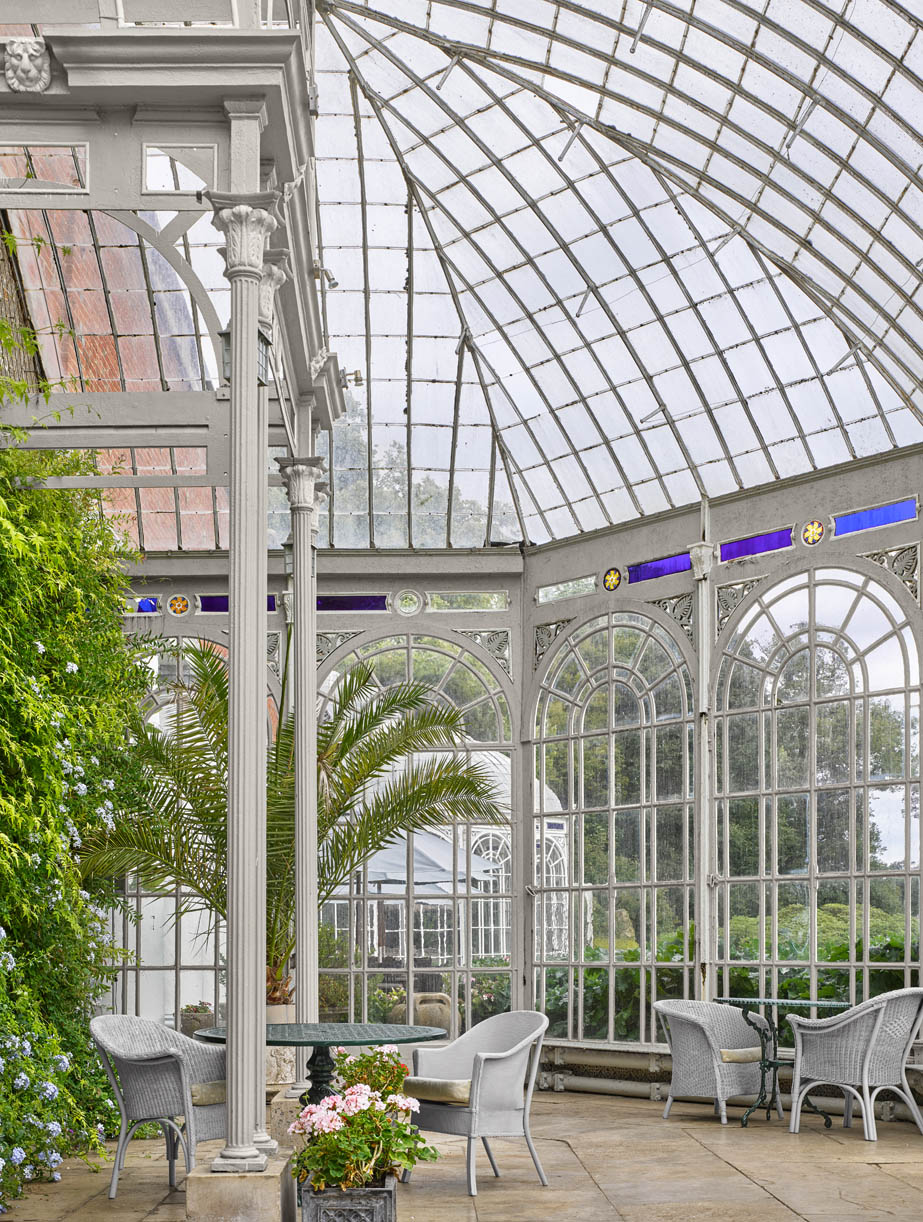
In addition, a series of apartments was created within the building to generate income. One of these, which directly connects with the principal interiors, is now occupied by the Hicksons’ daughter, Sarah Bullen, who has now assumed responsibility for the property. This arrangement allows the house to be used on a grand scale when necessary and also to operate concurrently as a venue and a private residence.
No less important have been the interrelated responsibilities of repair, maintenance and preserving the integrity of the setting. Some of the most recent landmarks in this work have been the purchase of the lake in 2006 and the restoration of the urns along the parapets with the help of a generous grant from the Country Houses Foundation (now the Historic Houses Foundation) in 2015.
Almost absurdly rash as Mrs Hickson’s purchase was in 1953, it is surely now impossible to regret.
For further information, telephone 01962 779260 or visit www.avingtonpark.co.uk

John spent his childhood in Kenya, Germany, India and Yorkshire before joining Country Life in 2007, via the University of Durham. Known for his irrepressible love of castles and the Frozen soundtrack, and a laugh that lights up the lives of those around him, John also moonlights as a walking encyclopedia and is the author of several books.